How to fix the timber to the timber
When building a house with your own hands with a bar, you need to know almost everything about how to fix a bar to a bar. Here are the most basic mounting methods:
- Lower binding.
- Vertical mounting frame racks.
- Top trim.
- Corner, not angular racks.
- Fastening angles.
- Fastening timber by cutting.
- Strengthening the frame.
- Mounting ceiling beams.
Before starting work with a bar, it is necessary to take care that all materials and the territory where construction will take place are prepared.
Features of work with a bar

- The timber for the frame must be dry, if it has not dried, then after installation, the framework is immediately sheathed from the OSB beam;
- process all the material with a special antiseptic;
- prepare the necessary fasteners in advance;
- Before purchasing a timber, be sure to accurately calculate the required size of the skinning frame, if this is not done, then with increasing thickness (unplanned) you will need to add small parts to the frame, which is not a good start when building a frame base.
The lower trim of the timber is made on the principle of laying on the grillage (roofing material is pre-laid).
Before tying, it is imperative to cover the foundation with ruberoid (suitable for cheap) or film, otherwise the timber is damaged (when the construction is frozen for several months).
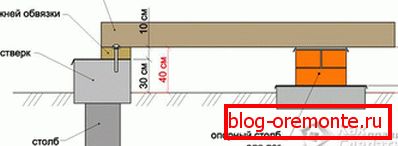
If there is no roofing material, you can cover the foundation with a conventional film that will protect the concrete from moisture and the formation of concrete milk. When the foundation is ready for laying the timber, check the level of the grillage with a level to make sure that it is perfectly even. On this surface impose a bar, necessary for the bottom strapping, with the bars joining the method of sampling at the corners.

Sampling can be half-tree or paw. The half-wood variant implies an even cut in half the thickness of the timber (for joining with another timber). The option of attaching to the paw implies a cut at an angle of 45% from the middle of the beam to the lower end (or upper, depends on where one of the bars will be attached).
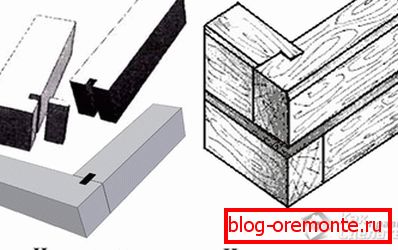
When fastening a beam on the principle of angular fixation, use one of the options:
- anchor connection;
- fasteners nails 150mm;
- mount with wooden dowel.

Nagel should be of dried oak, with a protrusion above the bar surface by 6-8 cm, the diameter of the dowel is always equal to the diameter of the mounting hole. Before fixing the bars compare: they must be equal diagonally and at the corners.
In case of lower strapping, the timber is fastened to the foundation with the help of nuts with wide washers. The washer improves fastening with the foundation, because it increases the plane of adhesion of the two surfaces. The nut is selected on a turnkey basis - hex, other options are not suitable.
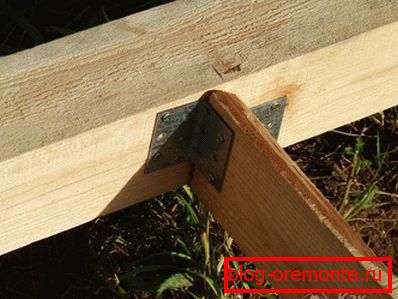
When the bars of the lower trim are connected with nails or pins - an angular anchor is not required. If the corners were fixed differently, without lugs or nails, then the first anchor is attached to the corner in the place where the bars join.
The vertical posts of the frame structure are installed after the process of lowering the bars is completed. When working on installing racks, start with corner frames.
Mounting options

- If the bottom trim is on nails or anchors, the corner post is fastened with a steel angle.
- After attaching the bottom trim, the corner posts are put on the left overhangs of 6-8 cm.

Fixing non-angled racks is done in two ways: by cutting, by steel corners. Corners hold the construction more reliably, they have only one drawback - cost. The corners themselves are attached to the timber with self-tapping screws. The punching method involves fastening with a special recess having a depth of 50% of the thickness of the bottom trim. Example: if a timber has a thickness of 80 mm, then the cutting depth will be 40 mm.
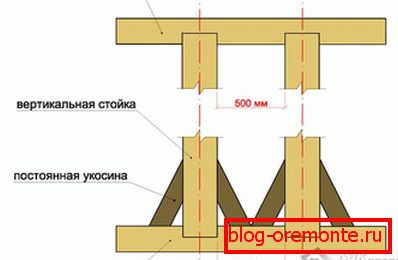
Non-angled racks necessarily fasten stitches that hold the structure and do not allow it to loosen. Ukosiny needed until such time as it is not done the top strapping construction bars, then ukosiny can be removed.
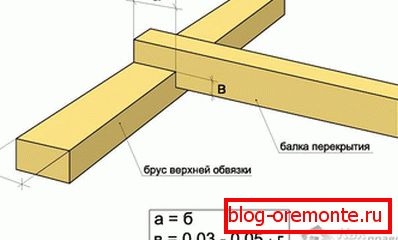
Bars of the upper strapping are more convenient to dock on the cutting or using corners made of galvanized steel. If the method of cutting is chosen, then it is necessary to make accurate markings for cutting for each vertically installed bar (stand). The grooves of the upper trim should coincide with the grooves of the lower trim, otherwise you will get a skewed construction, which gradually collapses itself.
Video
How to prepare the joints of timber, see below: